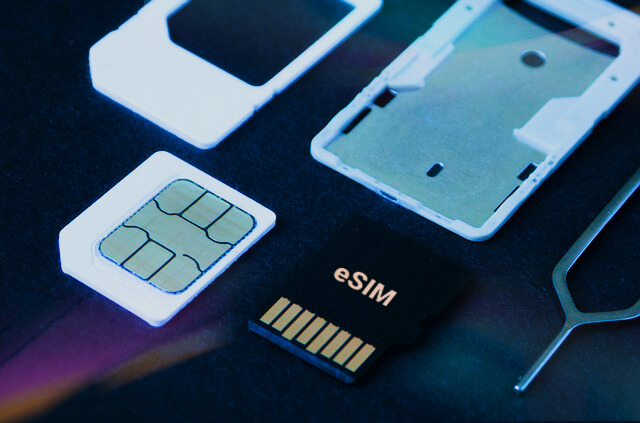In our modern world defined by instant connectivity, smart devices, and not enough time in a workday, the rise of smarter, simpler (at least for the end user) technology is an exciting inevitability, and eSIMs are no exception.
A bold statement, but eSIMs (embedded subscriber identification modules) have the potential to redefine and revolutionise the way we connect our devices to the internet. Unlike traditional SIM cards, which most of us have used in some capacity and must be physically inserted into a device, eSIMs are built directly into the device itself. This allows not only for more flexible and customisable mobile plans but unlocks the ability to seamlessly switch between different service providers, anywhere in the world, as the eSIM-equipped device simply connects to the most suitable network operator, in a process known as bootstrapping.

The advantages of eSIM integration are myriad for both manufacturers and end users. For instance, manufacturers can save time and costs by not having to install SIM cards into devices when they arrive at their end destination, nor will they need to custom configure simple devices for local markets. We touched on the ability of eSIMs to seamlessly switch service providers, and this is done through a process known as remote SIM provisioning (RSP). RSP doesn’t require physically switching SIM cards, thereby making it the ‘go-to’ solution for Original Equipment Manufacturers (OEMs) of products such as hermetically sealed medical devices, vehicles and heavy plant machinery, consumer devices, and numerous other IoT devices.
While eSIMs are already widely used in consumer electronics, such as smartphones and smartwatches (with Ericsson projecting 5.2 billion cellular IoT connections also by 2025), they have yet to be widely adopted in the enterprise and commercial sectors. However, several industries and business sectors are likely to adopt eSIM technology in the near future.
Transportation and logistics
One such industry that is poised to adopt eSIM technology is the transportation and logistics sector. With the increasing use of IoT devices in vehicles, such as telematics systems, eSIMs provide a convenient solution for connecting these devices via global roaming. With the ease at which eSIMs switch between different service providers, companies with fleets of vehicles that operate in diverse regions, with different coverage, can effectively negate any connectivity challenges. This enables massive cost savings as companies leverage ever-increasing roaming connectivity coverage and need no longer worry about purchasing and maintaining different SIM cards across various locations and routes.
Healthcare

Another industry likely to adopt eSIM technology imminently, is the healthcare sector. Medical devices such as wearable health monitors and remote patient monitoring systems, amongst others, are increasingly dependent on cellular connectivity, and eSIMs provide a convenient and secure way to connect these devices to the internet. This allows for real-time monitoring of patients’ vital signs and condition and allows for remote diagnosis and treatment in an area where the stakes are incredibly high, and lives often depend on secure, stable connections.
Additionally, eSIMs can also facilitate the integration of these devices into existing healthcare IT systems, making it easier for doctors and nurses to access and analyse patient data.
Industrial and manufacturing

With the growing adoption of Industry 4.0 and the Internet of Things (IoT) in manufacturing, eSIMs can be used to connect a wide range of industrial devices to the internet, and Transforma Insights even projects that by 2030, the overall IoT market value will be US$1.1tn, with 25.4bn active devices. eSIMs in this area facilitate real-time monitoring and control of production processes, as well as the ability to remotely diagnose and troubleshoot problems, leading to massive improvements in efficiency and reducing downtime, leading to significant cost savings for companies.
The broader eSIM outlook
However, despite the undeniable advantages of eSIM technology, there are still some challenges that need to be overcome before the traditional SIM can be universally replaced. Perhaps the main issue is compatibility with legacy product and network designs; not all devices and service providers currently support eSIM technology.
Overall, eSIM is a promising technology that has the potential to greatly simplify the way both consumers and enterprises connect devices to the internet.
As more and more devices and service providers begin to support and implement eSIMs, we can expect to see even greater adoption of this technology in the future, particularly in the transportation, logistics, healthcare and industrial sectors where IoT devices are already widely adopted. As the others catch-up, it is these industries that will demonstrate increased profitability way ahead of the curve.











